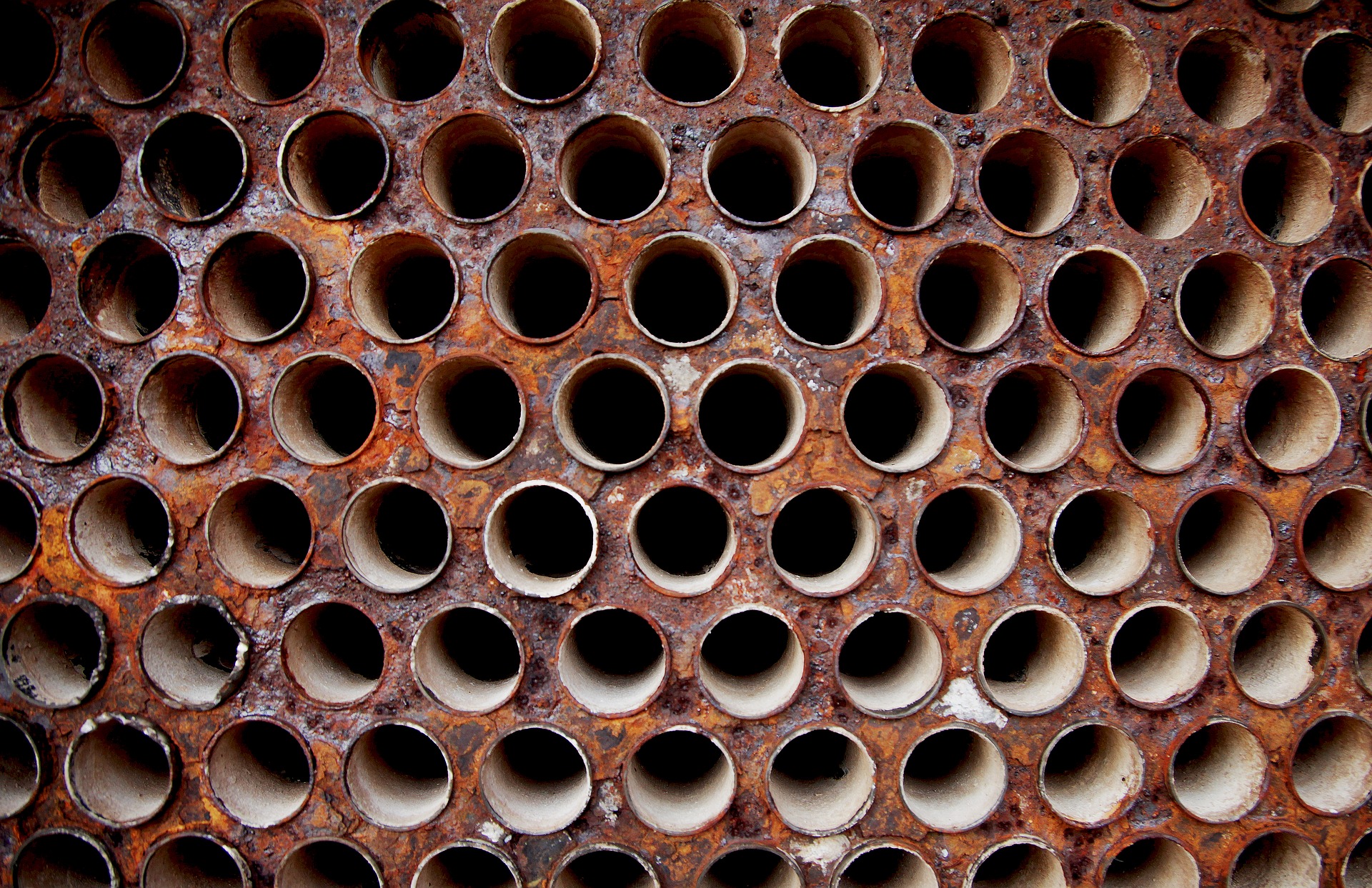

The above figure shows a typical corrosion cell for iron and its chemical reactions.
Corrosion is a natural process that is thermodynamically preferable for the metal concerned as it attempts to return from a high energy state (manufactured metals required a large amount of energy create them) to a low energy natural state i.e. the metal ore from which it came. Consequently corrosion can never be prevented completely, it can only be reduced and it is the aim of water treatment chemicals to reduce this corrosion so increasing the life expectancy of the metal and in some cases minimising biological contamination.
Corrosion can have many consequences such as reduced equipment life, reduced heat transfer efficiency , an increase in life threatening bacteria such as Legionella or even catastrophic failure of the equipment. As a result it is important to minimise the corrosion and this can be achieved in several ways, for example adding chemical corrosion inhibitors.
Water is a balance between corrosion and hardness precipitation and the tendency towards scaling can be calculated, as described by Langelier, Ryznar or Puckorius indices.
READ MOREA corrosion cell has two parts, an anode and a cathode and the choice of corrosion inhibitors is based on which part of the above reaction you wish to minimise. If two dissimilar metals are in contact through an electrolyte (water), the more anodic one undergoes corrosion. For example if aluminium and copper are in contact, aluminium undergoes corrosion.
Some examples of anodic inorganic inhibitors are nitrates, molybdates, sodium chromates, phosphates, hydroxides and silicates act by reducing the anodic reaction, i.e. blocks the anode reaction and supports the natural reaction of passivation metal surface, also, due to the forming film adsorbed on the metal. Inorganic cathodic inhibitors are the ions of the zinc that react with the hydroxyl (OH ) of the water forming the insoluble hydroxides as Zn(OH) which are deposited on the cathodic site of the metal surface, protecting it.
pH control is also key as metals can be affected by the wrong pH, whether that is acidic, alkali, or affected by both extremes (amphoteric)



It is the aim of a water treatment supplier to continually analyse the water to ensure that the correct corrosion inhibitors are chosen and are providing good corrosion control.
Collaton Consultancy Limited are highly experienced in water treatment so can help you manage your water treatment company ensuring they are providing the level of control you require on site. We have also provided Expert Witness services in cases where corrosion has led to catastrophic problems on site requiring an Expert to comment on causes and prevention methods.
EMAIL US NOW